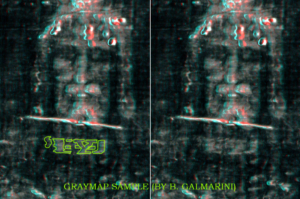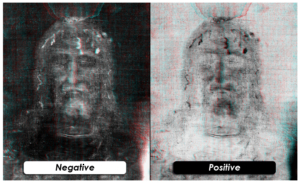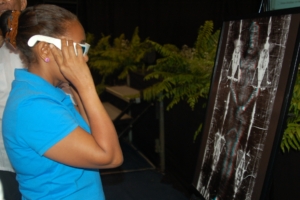Bernardo Galmarini, the 3D expert who produced the conversion from 2D to 3D of the head and of the front and the back of the body, did write the next two articles that follow after his curriculum. Most of the photographs that he used to illustrate these articles are in ANAGLYPH. We will give a short explanation of the ANAGLYPH imaging.
IN ORDER TO APPRECIATE THE PHOTOGRAPHS IN THESE ARTICLES, YOU WILL HAVE TO USE A 3D PAIR OF EYEGLASSES, WITH THE RED LENS OVER THE LEFT EYE AND THE CYAN LENS OVER THE RIGHT EYE.
ANAGLYPH IMAGE :
Anaglyph images are used to provide a stereoscopic 3D effect, when viewed with 3D color glasses (each lens a chromatically opposite color, usually red and cyan). Images are made up of two color layers, superimposed, but offset with respect to each other to produce a depth effect. Usually the main subject is in the center, while the foreground and background are shifted laterally in opposite directions. The picture contains two differently filtered colored images, one for each eye. When viewed through the “color coded” “anaglyph glasses”, they reveal an integrated stereoscopic image. The visual cortex of the brain fuses this into perception of a three-dimensional scene or composition.
Anaglyph images are much easier to view than either parallel (diverging) or crossed-view pairs stereograms (these are used in the article: 2D to 3D conversion of the HEAD). However, these side-by-side types offer bright and accurate color rendering, not easily achieved with anaglyphs. Recently, cross-view prismatic glasses with adjustable masking have appeared, that offer a wider image on the new HD video and computer monitors. Various steps can also be used to maximize the quality of the result. These may include size matching of the frames to within a few pixels, rotation (if needed), gamma leveling, and digital sharpening of the softer red image.
HOW ANAGLYPH WORKS : Viewing anaglyphs through appropriately colored glasses results in each eye seeing a slightly different picture. In a red-blue anaglyph, for instance, the eye covered by the red filter sees the red parts of the image as “white”, and the blue parts as “black” (with the brain providing some adaptation for color); the eye covered by the blue filter perceives the opposite effect.
True white or true black areas are perceived the same by each eye. The brain blends together the image it receives from each eye, and interprets the differences as being the result of different distances. This creates a normal stereograph image without requiring the viewer to cross his or her eyes.
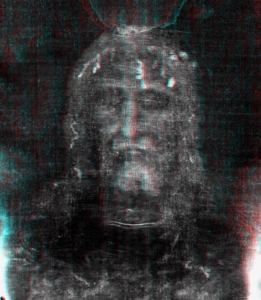
|
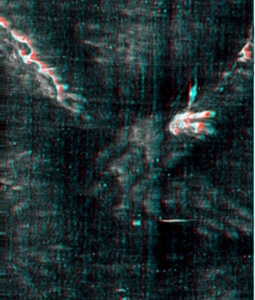
|
Anaglyph photos use 3D glasses
VIEWING ANAGLYPH IMAGES:
A pair of eyeglasses with two filters of different color is worn by the viewer. In Galmarini’s photographs, the red lens over the left eye allows only the red part of the anaglyph image through to that eye, while the cyan (blue/green) lens over the right eye allows only the blue and green parts of the image through to that eye. Portions of the image that are red will appear dark through the cyan filter, while portions of colors composed only of green and blue will appear dark through the red filter. Each eye therefore sees only the perspective it is supposed to see.
In the next series of photographs, you can see how we use these ANAGLYPH photographs in expositions, and also during presentations of the Shroud. You can see that the audience is using the 3D glasses and it is an effective way to show people the 3D qualities of the head and the front and the back of the body, and explaining all the details.
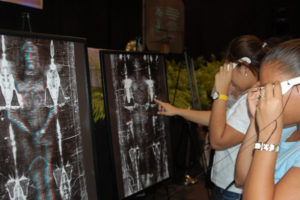
|
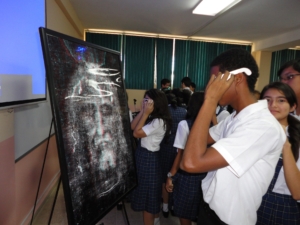
|
The public is using 3D glasses to see the 3D in the anaglyph photos of the head, front and back of the body, during presentation and expositions.

